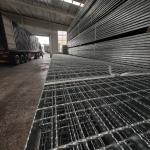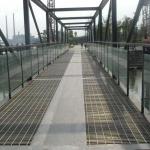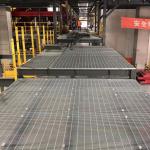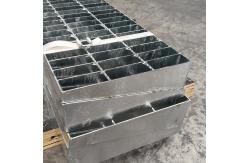product material Raw materials of steel grid plate are: flat steel,
twist steel, pattern plate.
The steel grid plate is an open steel member which is composed of
bearing flat steel and cross bar according to certain spacing and
fixed by welding or pressure lock. The transverse bar is generally
made of twisted square steel, round steel or flat steel, and the
material is divided into carbon steel and stainless steel.
Production method of steel grid plate:
The pressure welded steel grid plate is made of load flat steel and
cross bar arranged according to certain spacing longitude and
latitude, using 200 tons of hydraulic resistance welding automatic
equipment to weld into the original plate, through cutting,
opening, packaging and other processes.
Load flat steel spacing: the center distance between two adjacent
load flat steel, commonly used 30MM, 40MM two.
Bar spacing: The center spacing of two adjacent bars is usually
50MM and 100MM. |
Technical Parameters | Transport Package | Packaged By Steel Belt With Pallet | | Size | As Per Drawing,commoned 32*5 | | Features | Anti-slip, Drainage, Ventilation | | Thickness | 2mm-5mm,5mm | | Bearing Bar Pitch | 30mm, 40mm, 50mm, Etc | | Load Bearing Capacity | Heavy Duty | | OEM | Available | | Grating Standard | YB/T4001-2007 |
Dimensions
Material thickness: Common thickness of 2mm, 3mm, 4mm, 5mm and so
on. Different thicknesses of steel grids have different bearing
capacities and are suitable for different application scenarios. Size: Width is common 100mm, 150mm, 200mm, 250mm, 300mm, etc. The
length is made according to customer requirements, and the general
length is between 1 meter and 6 meters. The dimensions of steel
grids must be determined according to the actual application
scenario. Grid plate spacing: usually millimeters (mm) as a unit, such as
25mm, 30mm, 40mm and so on. The spacing affects the bearing
capacity and anti-skid performance of the steel grid. Load grade: According to the carrying capacity is divided into
different grades, such as A15, B125, C250, etc., representing
different carrying capacity. The selection must be based on the
load requirements of actual applications. |











